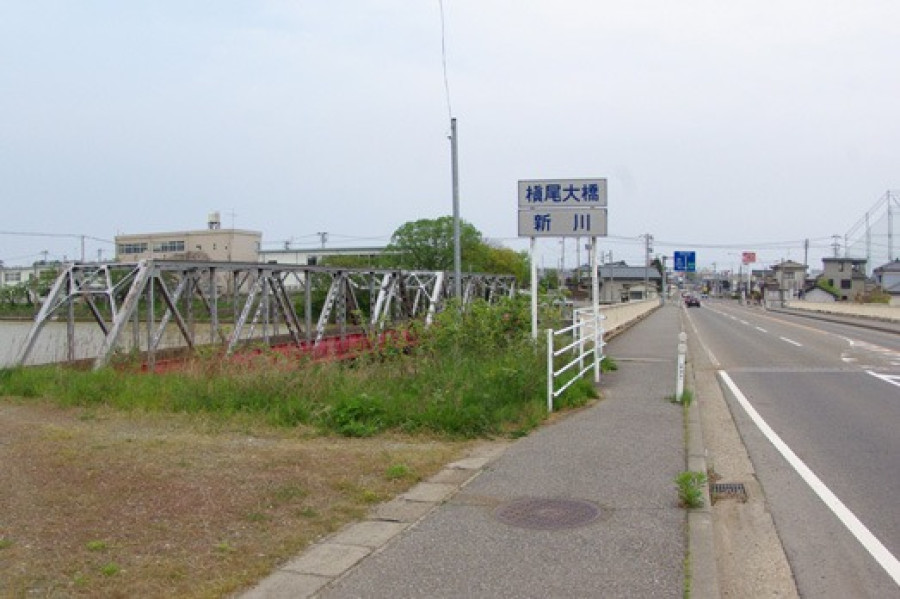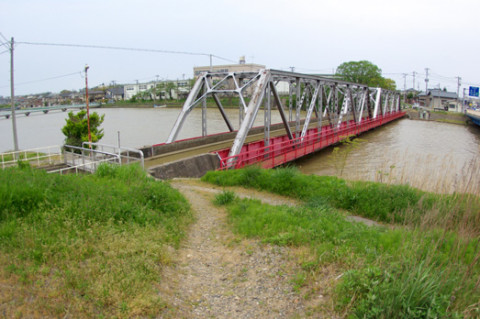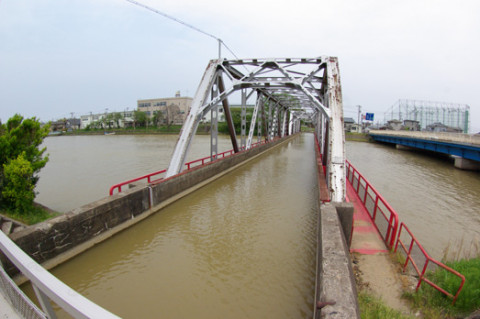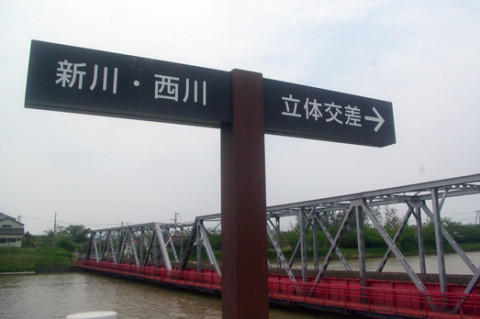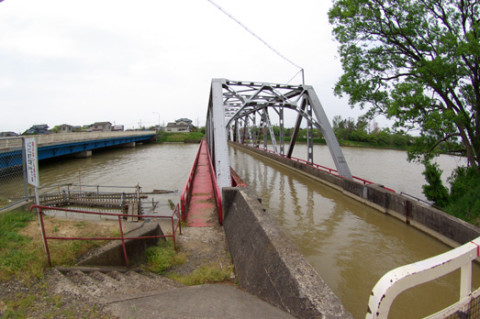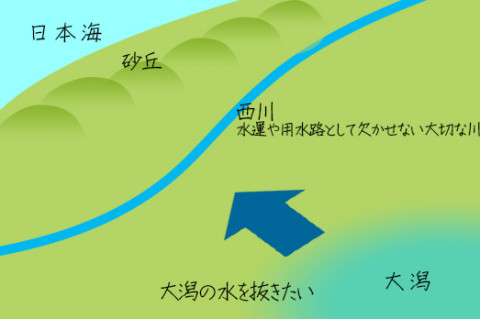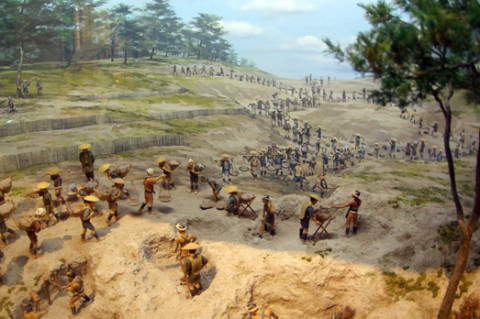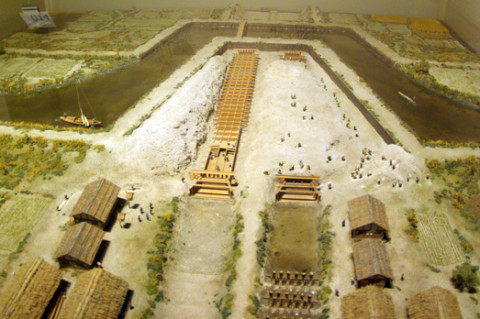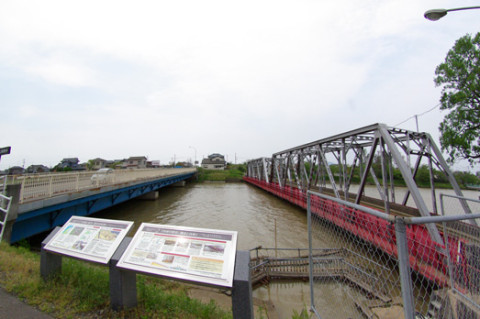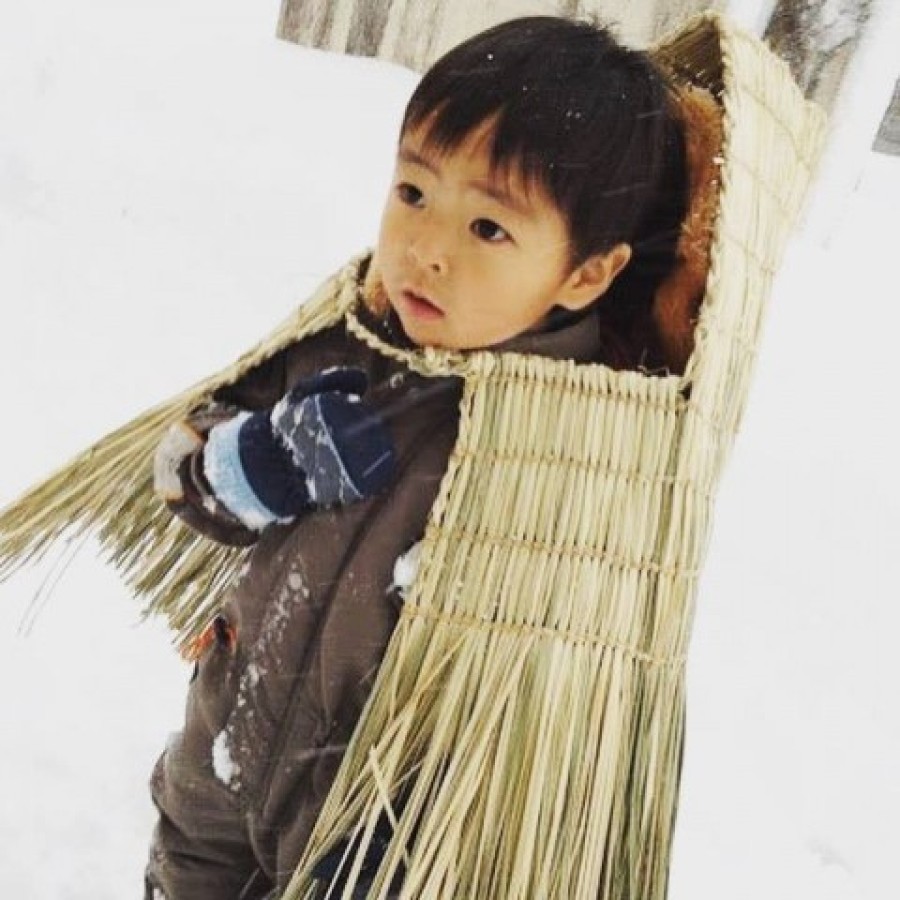In Nishi Ward, Niigata City, right next to the Kajio Bridge over the main road Nishi Odori, there is a parallel railway bridge.
Is there a railway line running through it? Let's get a bit closer.
It does not appear to be a railway line.
It's water, water is flowing! Water is flowing over the bridge!
This is the 'West River Aqueduct Bridge', which is a 'multi-level crossing' of the river 'West River' over the river 'New River'.
Many of you may know it as it was featured in a popular programme ( http://www.tv-asahi.co.jp/nanikore2007/contents_old/collection/0025/ ) a few years ago, which introduced 100 unusual sights from around the country.
The multi-level crossing was created almost 200 years ago, in the Edo period.
This multi-level crossing of rivers and streams is unique in the country. It is, of course, man-made.
However, the multi-level crossing was not realised until the Edo period. It was in the 3rd year of Bunsei, or 1820 AD. This was about 200 years ago, and was one of the largest and most difficult construction projects of its time.
In the past, the Nishikanbara area was low-lying and the area around Oogata often suffered from flooding. A plan was therefore made to dig a canal and channel the water from the Oogata to the sea.
However, its route was traversed by the West River. This West River played an important role at the time as a water transport and irrigation channel. Therefore, a new irrigation channel had to be built while ensuring that the function of this West River was not compromised.
This is a view of the construction work at the time. A miniature of what it looked like at the time is on display at the Minatopia, Niigata City Museum of History.
The original West River was diverted and a wooden channel called a 'sokohi' was dug under it. The West River was then re-routed over the "Sokohi" to create a multi-level crossing.
The waterway thus completed is the 'New River'.
At this time, the Nishikanbara area was a mixture of nine domains, including the direct domain of the Shogunate, the Murakami clan and the Nagaoka clan. The Nagaoka clan paid 60% of the construction costs and the Murakami clan 40%.
In the Taisho era (1912-1926), modern dark locks were completed and the West River was crossed over the New River. It was an arched brick construction.
The completion of the Okawazu Diversion coincided with the modernisation of the area, and the Nishikanbara area was transformed into a rich rural area.
The current steel bridge was built in 1955. In the more than 50 years since then, the 'Nishigawa Aqueduct' still plays an important role, supplying water to the fields in the basin.
Whether there are many visitors or not, there is an information board at the site that explains the history and role of this 'multi-level crossing' in simple terms.
It is a strange and interesting sight just to see it on site, but it is also deeply moving when you realise that it is actually a multi-level crossing with such a long history.
If you are passing by, please go and see this 'multi-level crossing'.
Spotlight.
Nishikawa-Shinagawa Interchange (Nishikawa Waterway Bridge)
Minatopia, Niigata City Museum of History
advertisement


